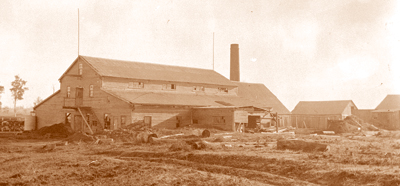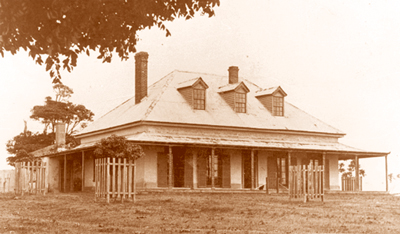|
Timeline Links
|

|
|
Kirchener’s Factory Sawmill
|
|
"Grafton and the Early Days on the Clarence"
GERMAN SETTLERS ON THE CLARENCE
Mr W. Kirchner was born at Frankfurt on Main and arrived in Australia in 1832 and was a merchant in Sydney who decided to come up to the Clarence and establish a soap and candle factory in the late 1840’s, on that area of Villiers Street which finishes near the present cemetery. He also included timber cutting, and his was the first sawmill established on the river, thus giving it the title of the “Factory” sawmill. This cut a great quantity of the timber that was utililised in the erection of buildings in Grafton and for settlers on the Clarence, drawing largely from the hardwood forests at Clarenza, mostly spotted gum. This was hauled to a wharf and thence rafted by means of casks across the river to the “Factory” sawmill. Cedar came along by rafts and these were navigated by the tides down stream several hundred logs at a time. The raftsmen and cutters pitched their tents on the rafts and piloted the floating mass to it’s destination. Cedar was plentiful and was shipped by sailing vessels from the factory and other places.
Mr Kirchner brought out from Germany a number of his countrymen with their families and employed them at the sawmilling and soap making. As most of the immigrants were from towns in Germany they followed various crafts, and on their service with Mr Kirchner being completed, they branched out in business for themselves.
The open country around the Racecourse appealed favourably to the German element. They secured allotments in the open spaces for the upset of eight pounds per half acre block, there they devoted much attention to grape culture and wine making.
They acquired the English language without much difficulty but maintained their own language for many years. Many of the early buildings of the settlement were erected by Germans. They erected a Lutheran church opposite Westward Park in Oliver Street and there they worshipped for a long time after in the manner, of their forefathers.
Mr Kirchner erected a two-stored home adjacent to the factory, but left before it was occupied. The first occupant being Bishop Sawyer, the first prelate of the Grafton Armidale Diocese, who was drowned immediately opposite his home while returning from a Sunday evening service in Grafton.
These German settlers proved to be industrious, thrifty people and many of their descendants still live in Grafton.
One of the cedar candle moulds used in Kirchner’s Factory is in the Clarence River Historical Society.
The barque “Caesar Godeffroy” arrived in March 1855 with 182 German immigrants. Many descendants of these people live in this district today, including the Beckmans, Wunderlich’s, Zeitsch’ s and Schafer’s.
One Barbara Adrian married Abel Everingham and reared nine children, John Klohr who lost his wife and daughter on the voyage - became a well known storekeeper - Rudolph Schafer and his wife Margaret who came from Lieman had seven sons - another couple were Rudolph Zeitsch and his wife Jacobina. In 1857 Rudolph bought 66 feet of land in Prince Street (in the main block) for seven pounds, ten shillings, but sold it a few months later after he had cleared the scrub from it for thirty four pounds, to Conrad Wagner.
This Conrad Wagner was an artist of no mean ability and a water colour depicting the plight of a family in the 1863 flood hangs in Schaeffer House.
The complete passenger list of the “Caesar Godeffroy” is in the Mitchell Library.
|

|
|
Argyle Villa
|
|
|